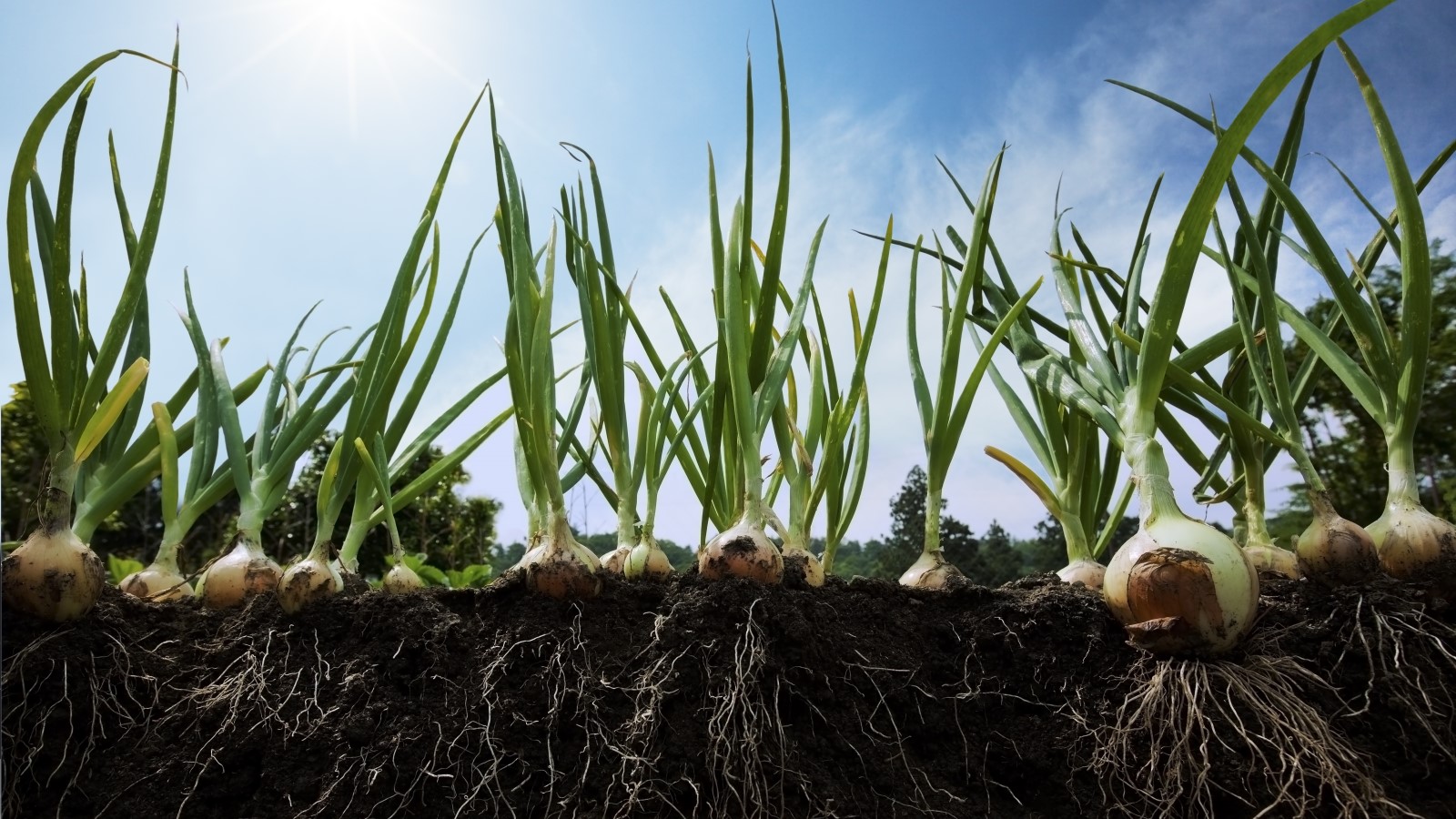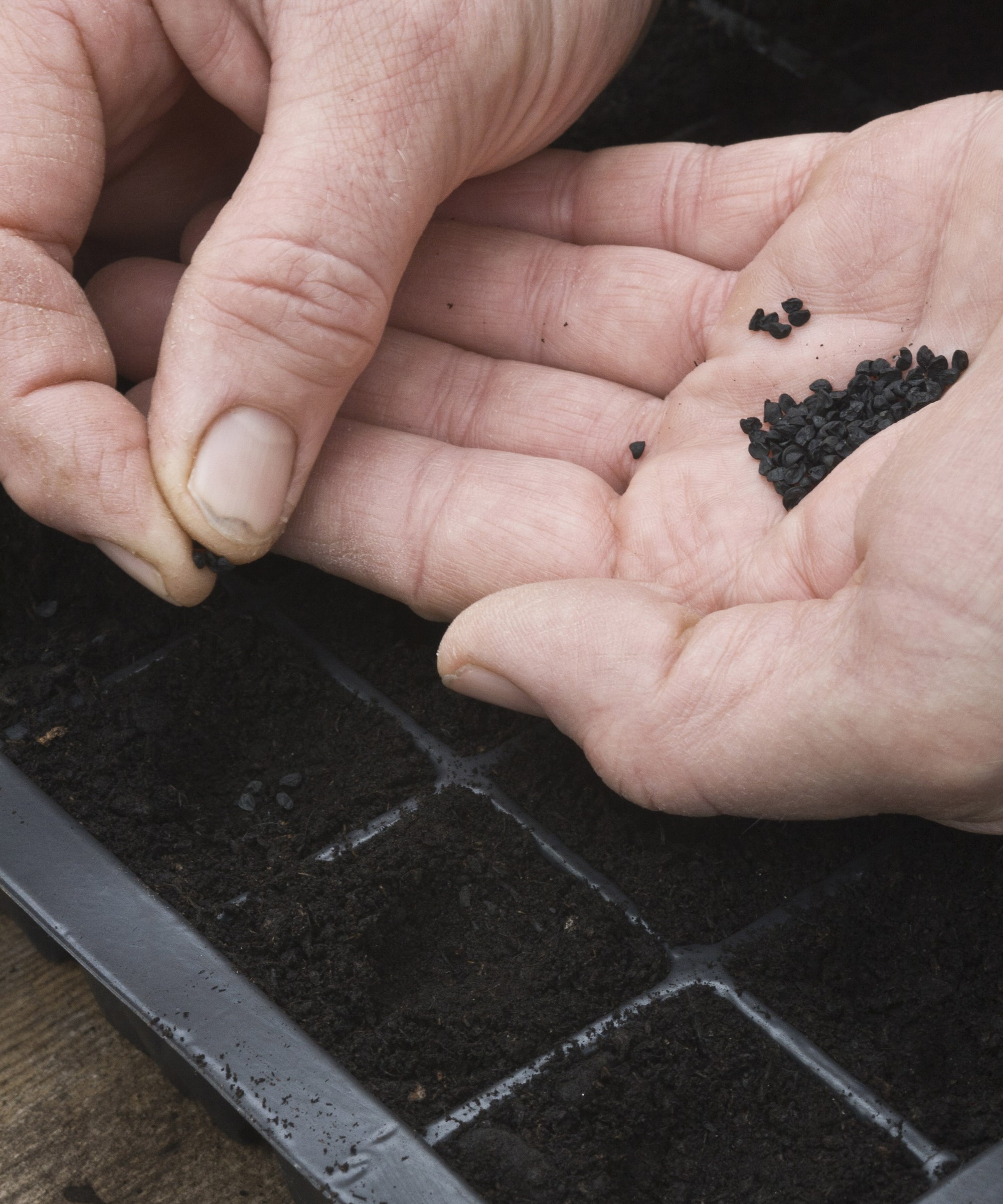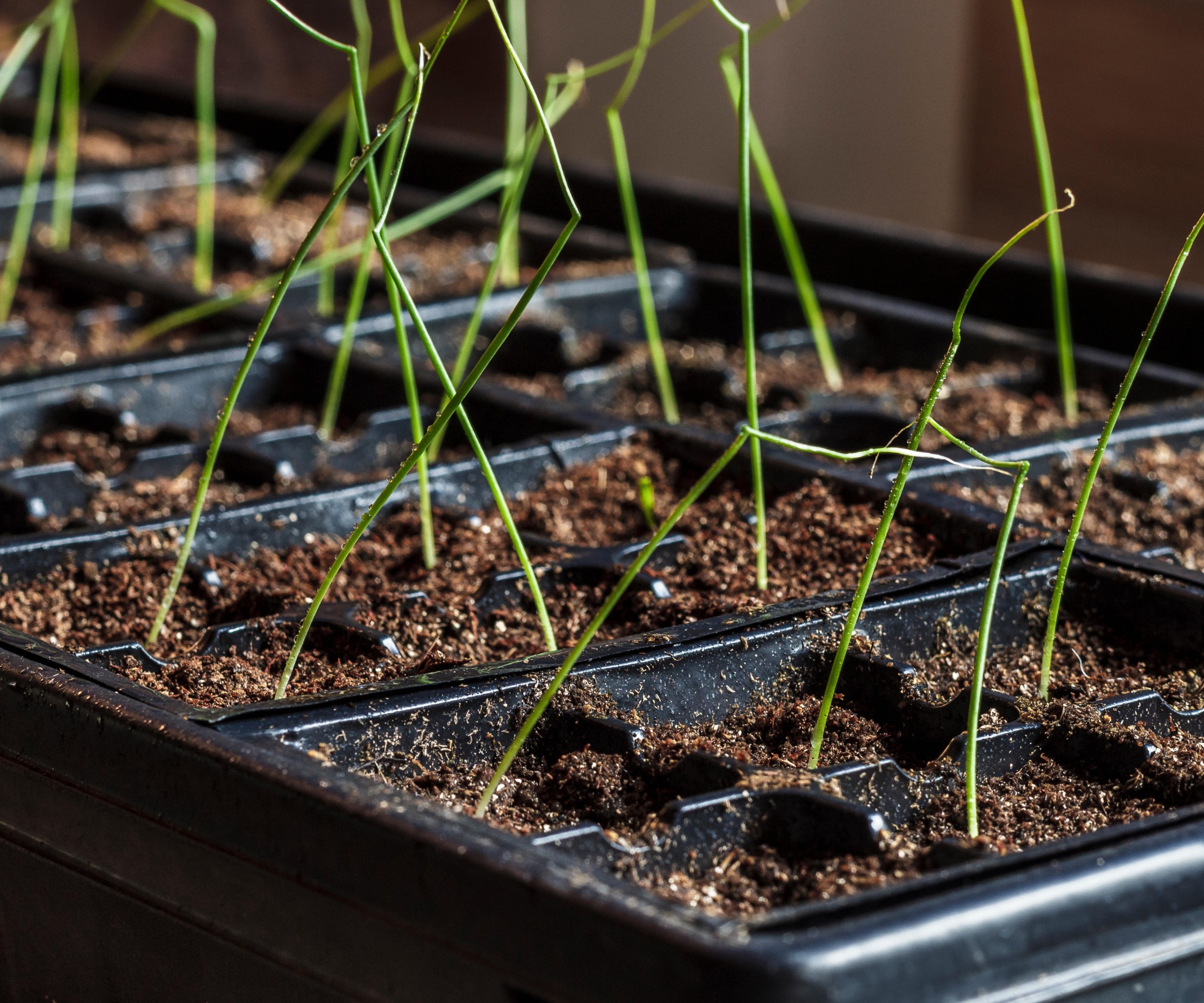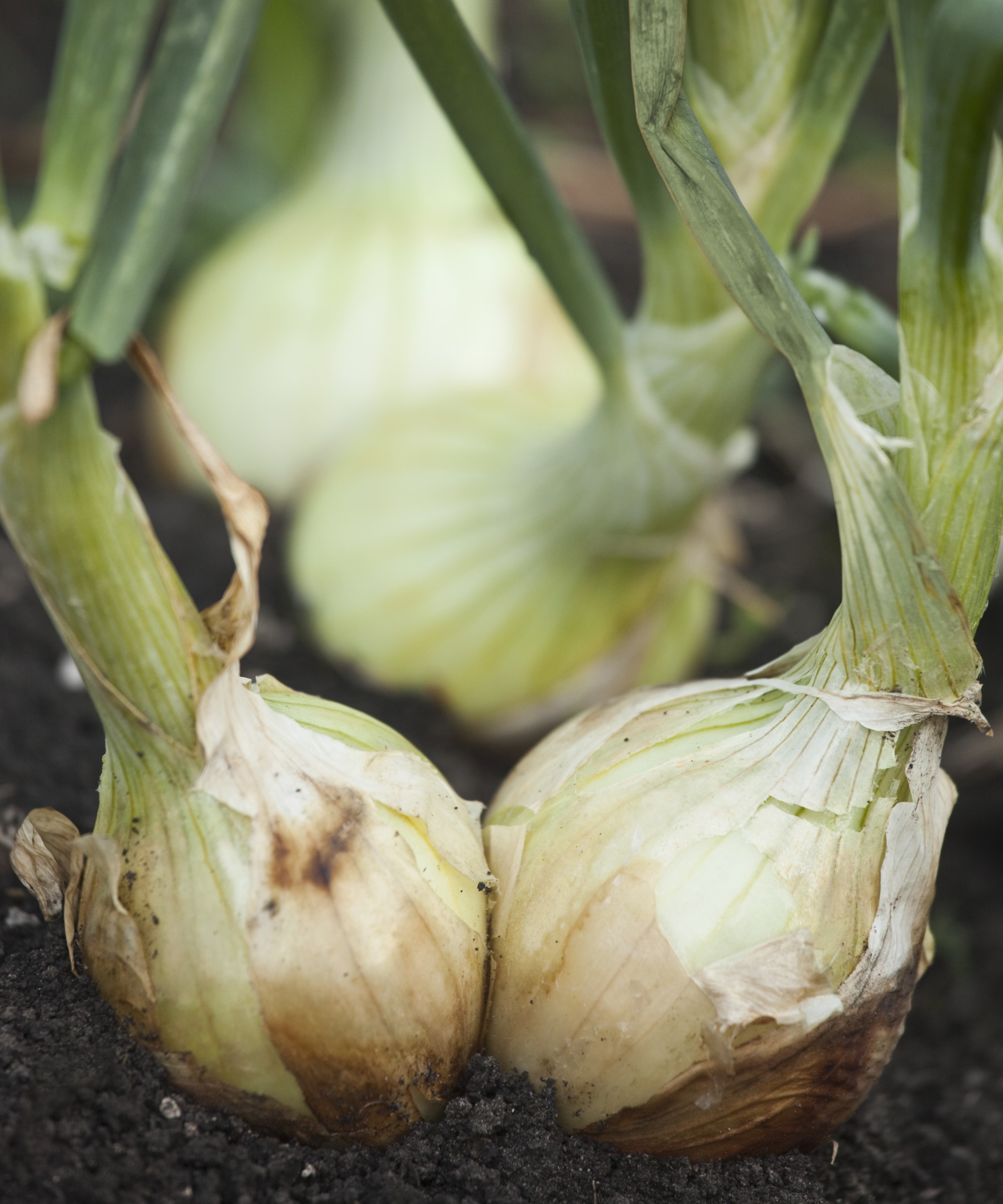When to transplant onion seedlings – get the timing and method right
Transplant your onion plants outside perfectly, plus what to do if your seedlings are falling over


If you are after bigger onions, then it may be worth experimenting with onion seeds as they tend to be larger than those grown from sets come harvest time. A key part of this process will be judging when the time is right to transplant your onion seedlings.
Growing onions has been an annual task for me in the kitchen gardens I worked in. I have always sowed onions from seed every year and had to pick when to transplant my onion seedlings out in the vegetable garden. This decision is dictated both by the size of the seedlings and the weather. Some years the seedlings are large enough but a cold snap delays the transplanting. Others the weather will be perfect earlier, but the seedlings might not be large enough and you have to wait. And then there’s those years where everything aligns perfectly.
Learning to identify the signs they are ready, and knowing how to safely transplant them without damaging your precious seedlings, are two great skills to have for any vegetable grower.

Sow onion seeds sparsely and thin seedlings to around an inch apart

Drew is a former professional gardener who specialized in growing vegetables. He worked in kitchen gardens for the National Trust in the UK and ran a productive walled garden growing vegetables, fruit, and herbs for a high-caliber restaurant in England.
When to transplant onion seedlings
There are two ways to grow onions for your vegetable garden, and that is by onion sets or onion seeds. When growing onions from seed, sow undercover in mid-winter (January and February) either in a heated greenhouse, propagator, or on a warm windowsill in your house. Onion seeds need around 70˚F to germinate efficiently. Once the seeds have germinated, artificial lights – such as these LED propagation grow lights from Nature Hills – can be used to supplement the lack of light around during winter time if necessary.
When onion seedlings get to around 6-8 inches and have three leaves it is time to start preparing them to transplant. Typically it can take around 50-70 days to go from sowing the seed to the seedlings being the right size to transplant. When to plant onions grown from seed is always dependent on when they were sowed and also the heat and light you are able to give the seedlings.

Seedlings must be carefully pulled apart when transplanting
How to transplant onion seedlings outside
Onion seeds can be sown in either trays or modules – I tend to prefer using modules as it makes the process of transplanting the seedlings simpler. My onions were typically sown during January in a heated polytunnel and then would be planted out in the vegetable garden around three months later. Once the small onions are ready for transplant, they do need to be hardened off first. This attunes the seedlings to colder temperatures in preparation for the big day when they are transplanted outdoors.
Jen McDonald, certified organic garden specialist and co-founder of Garden Girls, normally starts her onions indoors 12-14 weeks before the last frost date for where she is based in Houston. She hardens them off over an extended period. She explains: ‘Introduce them to outdoor temperatures a little bit each day, adding time as you progress, for about 2-4 weeks. As they acclimatize, you’ll eventually reach the milestone of leaving them out overnight. Then they’re ready.’
Design expertise in your inbox – from inspiring decorating ideas and beautiful celebrity homes to practical gardening advice and shopping round-ups.
The method of transplanting will differ depending on if your onion seedlings are in trays or modules. Either way, seedlings should be transplanted 1 to 1.5 inches deep and each transplant needs to be 3 inches apart. The onions can be planted in rows 12-15 inches apart.
When transplanting from a tray, use a fork to gently lever the seedling out of the soil. Be super careful not to damage the roots and only handle the seedling by the leaves and not the stem. Place the seedling into a good-sized hole, fill gently with soil, and pat the onion in. For seedlings grown in modules, it is best to gently squeeze the container to encourage the seedling and soil to come out. Make a larger hole than you would for a seedling from a tray and place the young plant in, patting it in. Water the seedlings lightly to avoid harming the shallow roots.

Onion seedlings are transplanted when 6-8 inches tall
Transplanting onion seedlings into containers
Onions can be transplanted into pots and containers, whether for temporary purposes or as their final position. Any seedlings grown too large for their module can need potting up into a larger pot to grow on. Smaller modules can result in onions quickly using all the nutrients up in the soil available. If the seedlings start to look yellow and unnourished, or lots of roots protrude out the bottom of the tray, it may be time to pot them up into a larger container to grow on. Squeeze the seedlings out of its module and place into a 1 inch hole in a pot filled with soil. Water well and place somewhere light to grow bigger ahead of planting outside.
Growing onions in containers is a fantastic way to get a good onion harvest and seedlings can be transplanted into their final position in a pot or container. A suitable container for onions needs to be at least 10 inches deep and 24 inches wide to allow onions to develop to their full size. To transplant onion seedlings into containers, follow the same spacings and steps outlined above, whether the young plants are in trays or modules.

You can get a good crop of onions when growing in containers
Why are my onion seedlings falling over?
In my experience, there are generally two main reasons for why onion seedlings fall over and it is not always an issue to fret about. They either get too large and struggle to cope with their own weight, or there is an issue with watering.
Onion seedlings grow more leaves as they develop and get taller, and that can result in them flopping. When this becomes an issue, you can either trim the top of the seedlings or just hold off and wait to transplant them. I have planted seedlings that have flopped under the weight like this and it has been no issue – they have developed into great bulbs.
It is a bigger problem if the small onion seedlings are collapsing due to water issues. Young seedlings can suffer quickly from a lack of water or too much water. It can be a particular problem in transplant trays where there is not a lot of soil and what is there can dry out quickly on hot days, or under artificial lights. A young onion seedling will very quickly start to wilt when its water resource dries out. It should be easy to spot if the soil is too dry and water as required.
On the other hand, overwatering onion seedlings can also cause them to topple. Signs of too much water will be yellow foliage and, in extreme cases, potential rotting off of seedlings at soil level. If you see an onion struggling due to overwatering, move it to a warm and sunny spot, monitor it, and hold off watering until the soil has dried out fully.
Do I need to transplant green onion seedlings?
There are many different types of onions for all your culinary needs, including white onions, red onions, and bunching onions. The latter are also known as green onions or scallions and they are commonly sown directly into the soil in the spot they are intended to grow. They should be sown whenever your soil is workable and can germinate in as low as 45˚F.
If you do want to transplant green onion seedlings, plan to sow them indoors around four weeks before you aim to plant them outdoors. Just like bulb onions, they can be sown either in trays or modules, but should be planted just 6 inches apart when transplanted out in the vegetable garden or container. You can buy bunching onion seeds from Burpee and Amazon.

Drew has worked as a writer since 2008 and was also a professional gardener for many years. As a trained horticulturist, he worked in prestigious historic gardens, including Hanbury Hall and the world-famous Hidcote Manor Garden. He also spent time as a specialist kitchen gardener at Soho Farmhouse and Netherby Hall, where he grew vegetables, fruit, herbs, and cut flowers for restaurants. Drew has written for numerous print and online publications and is an allotment holder and garden blogger. He is shortlisted for the Digital Gardening Writer of the Year at the 2025 Garden Media Guild Awards.